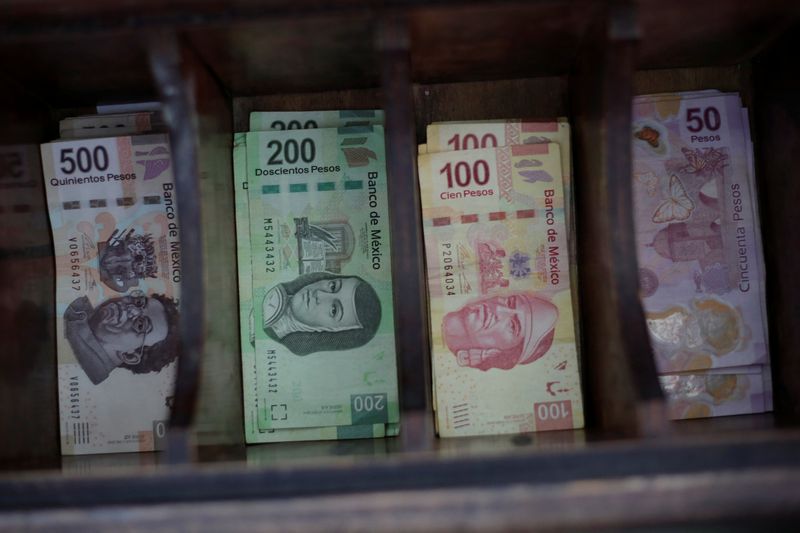Forex
EMFX will hold gains into 2024 provided central banks hold rates: Reuters poll


© Reuters. Mexican peso banknotes are pictured at a currency exchange shop in Ciudad Juarez, Mexico November 10, 2017. Picture taken November 10, 2017. REUTERS/Jose Luis Gonzalez
By Vuyani Ndaba
JOHANNESBURG (Reuters) – Emerging market currencies will hold on to gains into next year provided their respective central banks hold or only moderately prune already-high interest rates that have boosted carry trades, a Reuters poll found on Thursday.
The June 30-July 5 poll of 52 currency strategists found as long as most emerging market central banks wait for the U.S. Federal Reserve to finish hiking its own rates, this year’s carry trade returns should be safe.
Carry trading strategies have investors borrowing in currencies where interest rates are low to invest where yields are high, often emerging markets. But liquidity needs to be plentiful, with minimal volatility and little fear of global recession.
Most of the currencies surveyed, like the Thai baht, Indian rupee and South Africa’s heavily battered rand, were seen holding on to recent gains by year end.
Latin American currencies are also set to keep relatively strong in coming months, as the Brazilian real is underpinned by rosier economic prospects and budget reforms, while Mexico’s peso thrives on foreign capital relocating from China.
Even the is expected to gain 3.5% to 7/$ in six months, despite its central bank cutting rates just a few weeks ago.
The prospect of U.S. Fed policymakers adding at least two further rate hikes before the end of this year will remain a worry for investors, particularly if more than what is already priced into financial markets materialises.
Still, a few central banks, like Hungary’s, have already begun cutting policy rates, while those in Brazil and Chile have signalled intentions of easing soon with falling core inflation.
“As we enter (the northern hemisphere) summer, the persistence of low volatility and large rate differentials means that FX carry trades remain the flavour of the season,” wrote Adarsh Sinha at BofA.
Emerging market currencies have remained resilient despite disappointing domestic growth and China’s economic performance, as to a large extent rate differentials have supported the currencies as investors enjoy carry trades.
Net-total carry trading returns were topped by the Colombian and Mexican pesos respectively, according to Refinitiv’s currency performance and value tracker in the last six months. They were followed by the Brazilian real and Polish zloty.
However, Capital Economics cautioned in a note the recent resilience of EM currencies will reverse as easing cycles broaden and risk sentiment sours in the latter half of the year, amid potential recessions in the U.S. and other major economies.
(For other stories from the July Reuters foreign exchange poll:)

 Forex3 years ago
Forex3 years agoForex Today: the dollar is gaining strength amid gloomy sentiment at the start of the Fed’s week

 Forex3 years ago
Forex3 years agoUnbiased review of Pocket Option broker

 Forex3 years ago
Forex3 years agoDollar to pound sterling exchange rate today: Pound plummeted to its lowest since 1985

 Forex3 years ago
Forex3 years agoHow is the Australian dollar doing today?

 Cryptocurrency3 years ago
Cryptocurrency3 years agoWhat happened in the crypto market – current events today

 World3 years ago
World3 years agoWhy are modern video games an art form?

 Commodities3 years ago
Commodities3 years agoCopper continues to fall in price on expectations of lower demand in China

 Economy3 years ago
Economy3 years agoCrude oil tankers double in price due to EU anti-Russian sanctions























